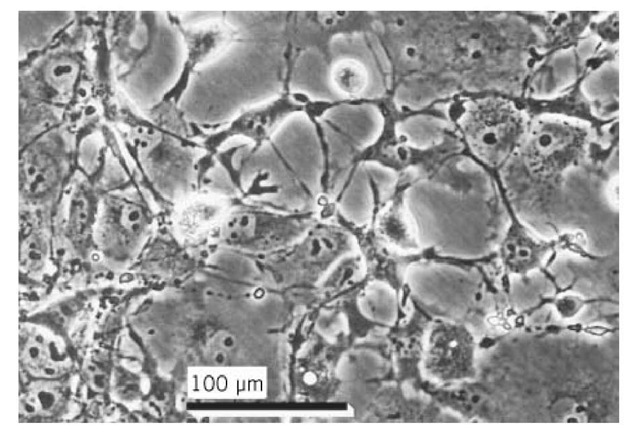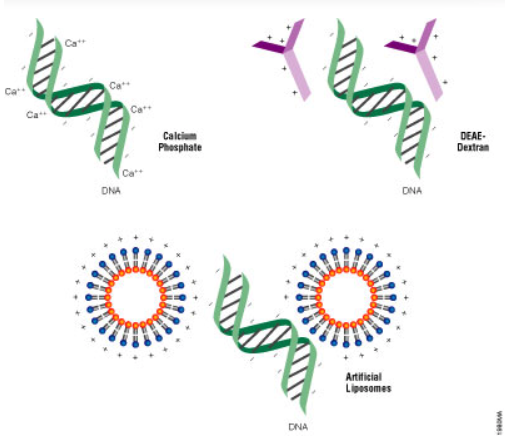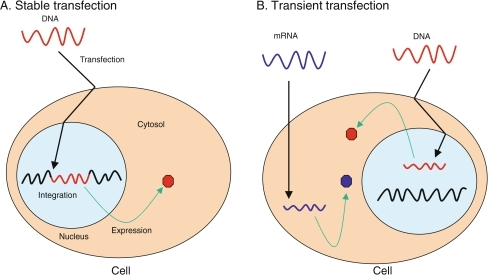Basic cell culture techniques, WB, transient transfection
basic techniques
4. Cos cells
Figure 1. Confluent culture of COS-7 cells. Phase contrast, Olympus CK microscope, 20* objective.

1. Origin
COS (an abbreviation for CV-1 in Origin with SV40 genes) cells are a laboratory cell line derived in the 1960’s. COS cells behave like fibroblasts, and were originally obtained by immortalizing CV-1 cells from the kidney of the African green monkey (Cercopithecus aethiops) using a SV40 virus that produces large T-antigen but does not replicate correctly.
- COS-1 cells contain a single integrated copy of the complete early region of the SV40 genome.
- COS-7 was developed in the 1980’s via transformation with a mutant strain of SV40 that codes for the wild-type T-antigen. These cell lines are used to study SV40 monkey viruses and as a common mammalian production cell for recombinant proteins, such as antibodies and signalling molecules.
- COS-1 and COS-7 are T-antigen-positive, permit lytic growth of SV40, and support the replication of temperature-sensitive mutant SV40 tsA209 and of SV40 mutants with deletions in the early region.
2. Properties
COS cells are propagated as a monolayer in the alpha modification of Eagle’s minimal essential medium (a-MEM) supplemented with 10% fetal bovine serum (see Serum Dependence) or in Dulbecco’s modification of Eagle’s medium. They grow rapidly, with an approximate population doubling time of 18h.
3. Usage
COS cells have been used extensively in DNA transfer studies and have been transfected by a number of different methods, including calcium phosphate, DEAE, and lipid transfection.

4. Transient and stable transfection
Transiently transfected cells express the foreign gene but do not integrate it into their genome. Thus the new gene will not be replicated. These cells express the transiently transfected gene for a finite period of time, usually several days, after which the foreign gene is lost through cell division or other factors.
How can you tell whether, or which, cells were transfected successfully? Usually a reporter gene is included in transfection plasmids (or along with other types of nucleic acids, if not using plasmids). Reporter genes indicate the presence of the gene of interest within the cells and can usually be assayed about one to two days after transfection.
Generating stably transfected cells begins with a transient transfection, followed by an infrequent but important and serendipitous process. In a small proportion of transfected cells, the foreign gene is integrated into the cells’ genome. The hallmark of stably transfected cells is that the foreign gene becomes part of the genome and is therefore replicated. Descendants of these transfected cells, therefore, will also express the new gene, resulting in a stably transfected cell line.
When developing a stable transfection, researchers use selectable markers to distinguish transient from stable transfections. Co-expressing the marker with the gene of interest enables researchers to identify and select for cells that have the new gene integrated into their genome while also selecting against the transiently transfected cells. For example, a common selection method is to co-transfect the new gene with another gene for antibiotic resistance (such as the neomycin resistance gene, neo) and then treat the transiently transfected cells with the appropriate antibiotic for selection (such as geneticin or G418 for neo-transfected cells). Only the stably transfected cells with resistance to the antibiotic will survive in long-term cultures, allowing for the selection and expansion of the desired cells.

